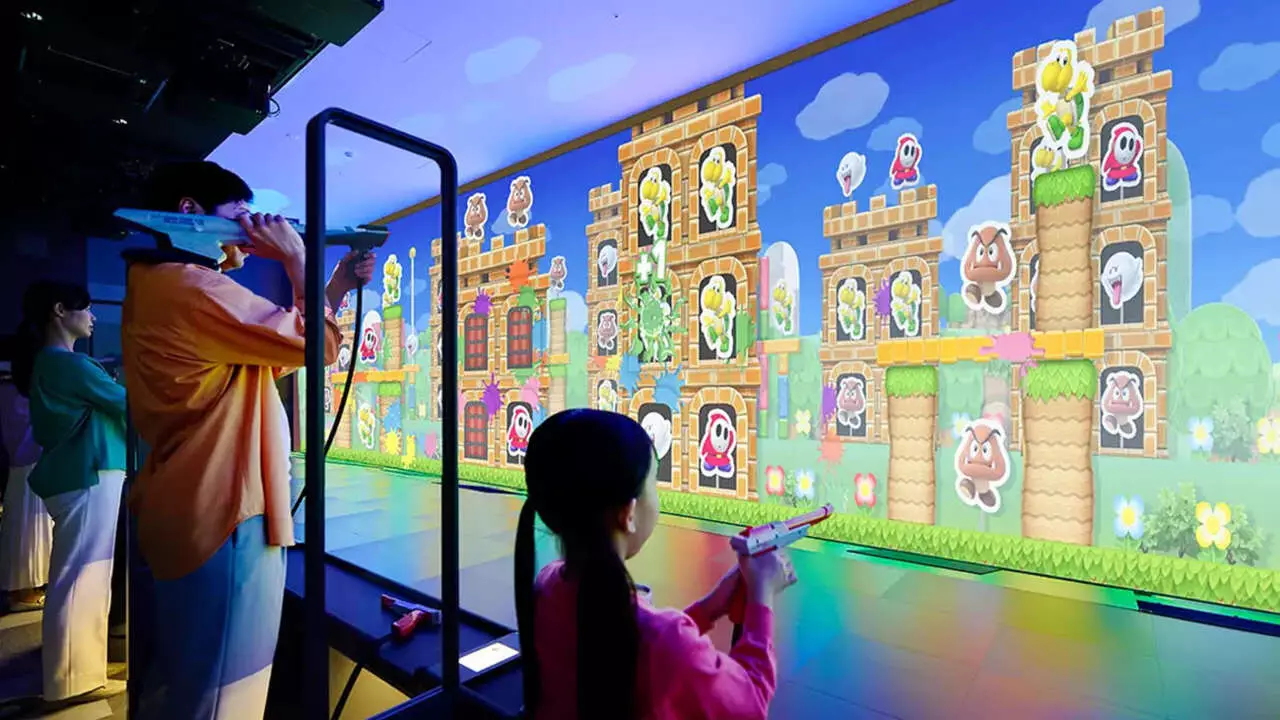Recently inaugurated in Kyoto, Japan, the Nintendo Museum has quickly garnered attention and sparked enthusiasm among gaming fans and collectors alike. Open to the public for just a couple of days, the museum is not only a tribute to Nintendo’s rich heritage but also a showcase of its influence on the global gaming landscape. Yet, with this excitement comes the unfortunate reality of scalpers who exploit the fervor surrounding exclusive merchandise, leading the museum to implement restrictions in an effort to ensure fairness and accessibility for its guests.
The arrival of scalpers at the Nintendo Museum is an unexpected yet not entirely surprising development. Reports indicate that various collectible items have already surfaced online, with prices reaching exorbitant levels, such as nearly $500 for a Wii Controller cushion. This scenario has prompted the museum to take protective measures by limiting the amount of merchandise one customer can purchase, thus aiming to mitigate the re-sale opportunities for scalpers. Products like controller-shaped cushions and miniature keychain collections are now strictly one per visitor, a measure intended to ensure that genuine fans have the opportunity to enjoy and acquire these exclusive pieces of memorabilia.
While the museum aims to make its merchandise accessible to its visitors, there is concern that increased restrictions may inadvertently inflate the demand for these collectibles even further. The one-item limit could lead to heightened interest from both genuine fans and opportunistic buyers, potentially resulting in an environment where prices consistently remain high in secondary marketplaces. It raises the question of how museums and institutions can balance the fanfare surrounding collectible items with the desire to maintain a supportive and inclusive community for all visitors.
Beyond merchandise, the Nintendo Museum invites visitors to engage with a historical narrative that spans nearly a century. Gaming enthusiasts reflecting on their experiences will find that the museum is not merely about games but about the evolution of gaming culture and the milestones that Nintendo has contributed to over the years. Dan Ryckert from Giant Bomb, who previewed the museum, noted how the exhibits resonate on a deeply personal level for fans, making it a meaningful visit that transcends mere nostalgia.
The Nintendo Museum stands as a testament to the enduring legacy of a company that has shaped the entertainment landscape worldwide. As it continues to welcome fans and tell the story of gaming’s evolution, how it addresses challenges such as scalping and merchandise accessibility will impact its reputation within the gaming community. The museum not only hopes to celebrate the past but to foster an environment that promotes appreciation and connection among gamers of all generations. The coming months will be crucial in determining whether the Nintendo Museum can manage its newfound popularity while maintaining the integrity and spirit that has drawn so many to its doors.


Leave a Reply